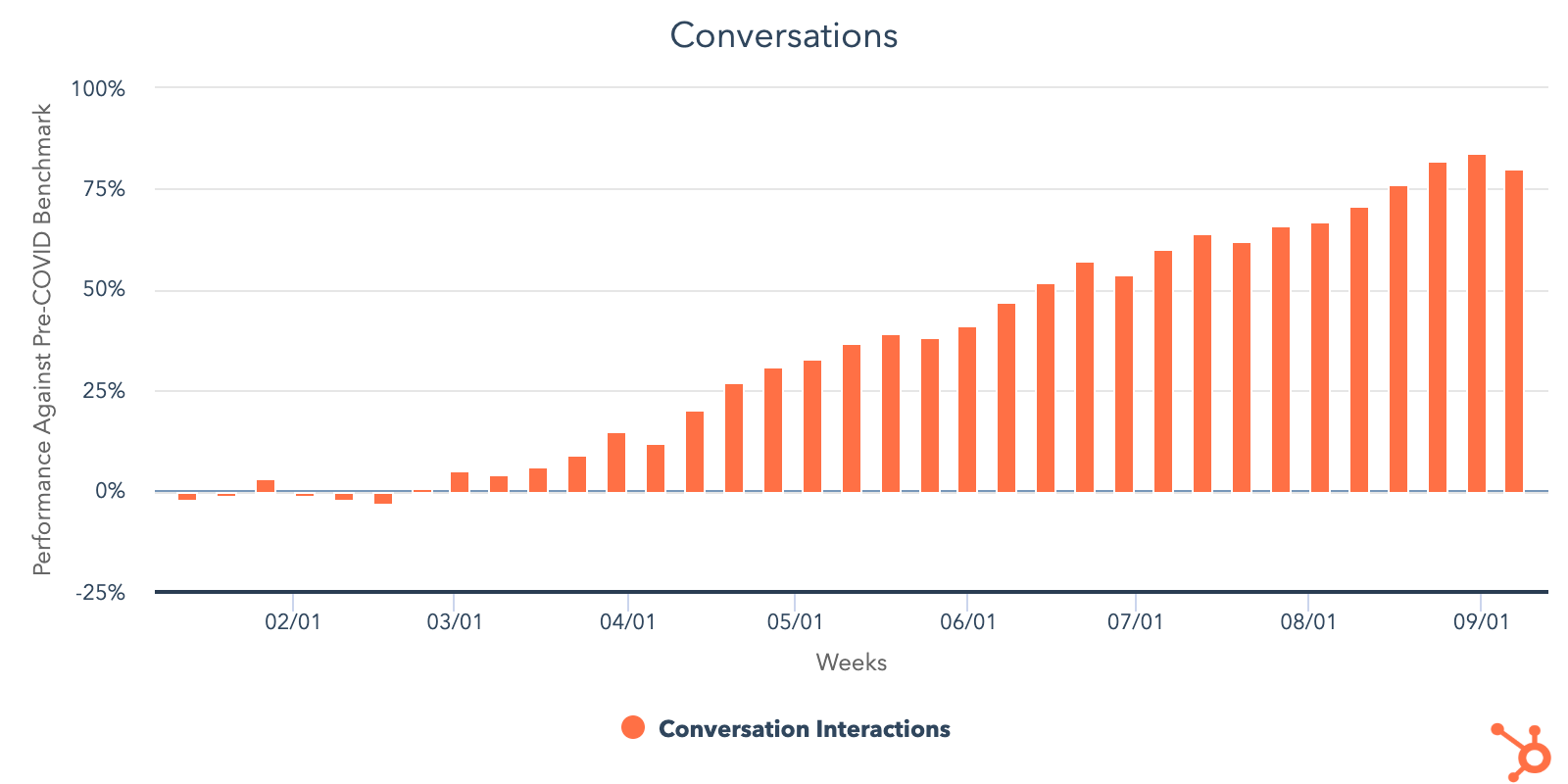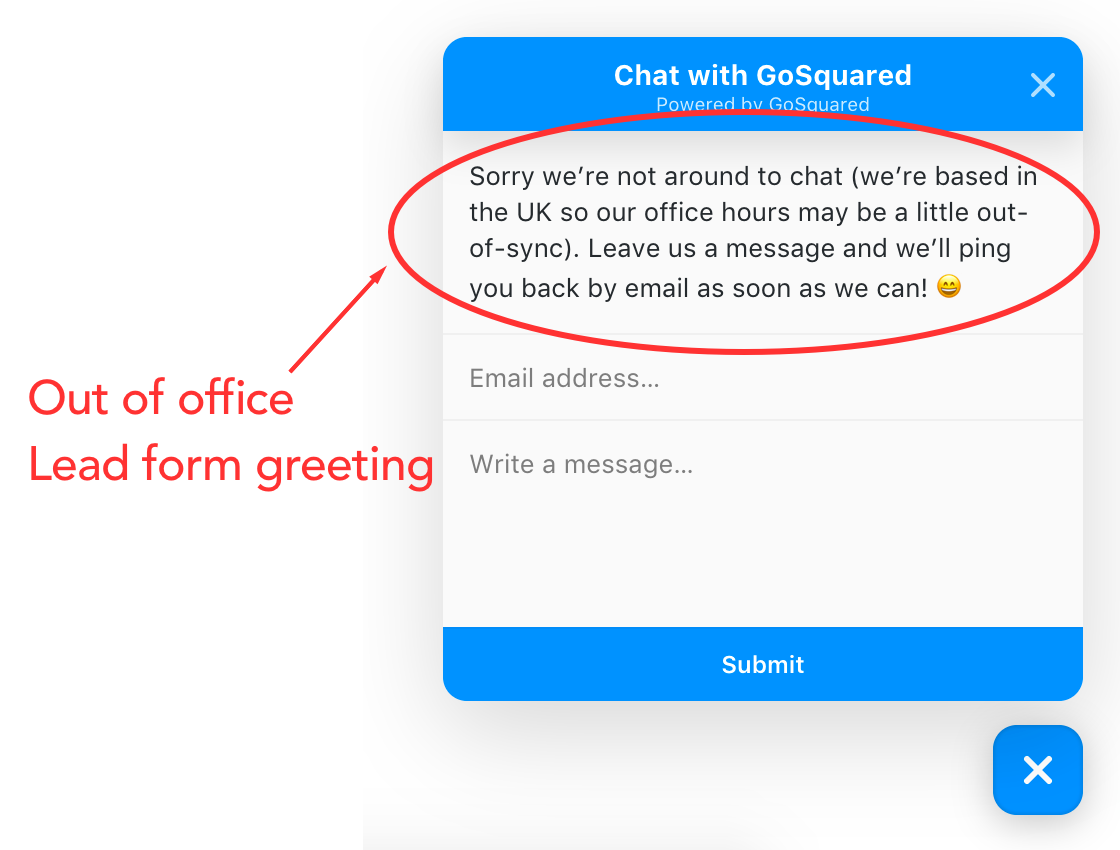Do Customers Prefer Chat or Phone Support?

After surveying over 250 people, we found 69% prefer to use phone support over chat or “other” support channels. And, there are a few reasons why this is the case.
Why Customers Prefer Phone Over Chat Support
First, chat is still a relatively new support medium. Instant messaging wasn't popular until the 1990s and businesses didn't start using it for customer service until the mid-2000s. Nowadays, it's pretty common to offer a chat service on your website, but that doesn't mean most people have come around to using it. Breaking habits is hard, and getting people to try a new support channel can be a challenge for some businesses.
Additionally, while many businesses offer chat support, there's still a large number that doesn't. This leaves some customers with no choice but to use phone or email for customer service. And, if most of a customer's favorite brands don't offer chat support, that customer will be less likely to use it if they encounter a new brand that offers traditional support options.
Lastly, some customers simply want to talk to a person over the phone than through a text-based medium. With phones, we can interpret vocal queues and tones that help us understand each other. When the pressure is on and a solution is needed before a deadline, some people are simply more comfortable with hearing someone's voice instead of reading a text.
This survey clearly indicates that customers prefer phones over chat, but, a study from Bold360 reveals that 71% of survey respondents believe chat will become more popular than phones and email by 2021. And, the data shown below from HubSpot's Adapt 2020 campaign shows that live chat usage increased tremendously in the last year.

So, even though this survey shows phones are more popular than chat, it's not time to jump ship on this channel just yet. In fact, you should continue to improve the experience of your live chat service so you can have a competitive advantage as chat grows in popularity.
Below are a few tips you can use to improve your live chat service.
5 Tips to Improve Your Live Chat Service Experience
1. Be Mindful of How Your Messages Look, Sound, and Feel.
When you're interacting with a customer through chat, you don't have the advantage of using your voice or facial expressions to convey your message. You have to rely solely on your writing skills to communicate with the customer. If your text looks or sounds a certain way, it can dramatically change how the customer feels about your message.
This means your writing needs to be clear and grammatically correct if you want customers to understand what you're saying. As a general rule, you should limit informalities like shorthand or abbreviations, in case customers aren't familiar with these messages. You should also avoid using all caps, as this can seem like you're yelling rather than highlighting a section of your text. If you want to emphasize a specific detail, try using italics or bolding to make your point.
2. Use Chatbots Strategically.
Artificial intelligence, like Crisp, is great for automating customer service, but it should never fully replace the human rep, even on live chat.
Chatbots should be used as liaisons between customers and support reps. While they can handle simple, basic inquiries, they should primarily work to connect customers with reps that are best suited to solve their problems. This gets customers faster solutions creating a more delightful service experience.
3. Offer Multilingual Live Chat.
One benefit of having a website is that people from all over the world can engage with your business. However, if you don't offer multilingual support, you'll only have a one-way channel to communicate with them. Which means, if they don't speak the same language as your support team, they'll only be able to read your website's content, and not be able to ask questions or chat with your reps.

If you don't have a multilingual support team, some chat providers offer translation tools that can be installed in your help desk or ticketing system. These tools can interpret a customer's message in real-time and translate it for your reps to read. When you want to respond, simply type your message and the translator will change it to the language of your choosing. This lets you overcome language barriers that may be preventing some customers from calling your support line.
4. Save Your Chat Records.
If you want to improve your chat experience over time, then it's important to save chat records in your CRM. That way, you can review your team's cases and see which problems customers are having most, what pain points are causing the most friction, and where you can add automation to improve your team's workflow.

Another benefit of saving chat records is that you can use them to solve future problems that other customers may have. If a customer has a problem that another rep has solved in the past, they can use feature's like Live Chat's "Chat Archives," for that record and see exactly what the rep did to solve that problem.
5. Set an Out-of-Office Message and Offer Follow-Up Resources.
One common mistake that some businesses will make is setting their chat service available to 24/7, but having no one to manage it during their off-hours. This results in customers reaching out to the business and waiting patiently for no one to respond.

If you aren't going to be operating your chat service at all times, then you should install an out-of-office message that alerts customers to your company's support hours. Even better, this message should link customers to alternative support resources, whether that's a 24/7 phone line or a self-service knowledge base. That way, customers always have a contingency plan even if your live chat service isn't available.
For more HubSpot data, check out which social media platforms customers prefer to contact.
.png?width=112&height=112&name=Image%20Hackathon%20%E2%80%93%20Horizontal%20(14).png)

![25% of Service Reps Don't Understand Their Customers [New State of Service Data + Tips]](https://53.fs1.hubspotusercontent-na1.net/hubfs/53/companies-that-listen-to-their-customers-1-20241008-1837871-1.webp)
![Why Gen Z Demands Exceptional Customer Support [New Data]](https://53.fs1.hubspotusercontent-na1.net/hubfs/53/Featured%20Image%20Template%20Backgrounds_AC%20Copy.png)


![How COVID-19 Impacted Customer Service & What's Next [Data + Expert Tips]](https://53.fs1.hubspotusercontent-na1.net/hubfs/53/how%20COVID%20impacted%20customer%20service.jpg)
![Why Consumers Get Annoyed With Customer Service Departments [Research]](https://53.fs1.hubspotusercontent-na1.net/hubfs/53/customer-service-annoyances.jpg)
![14 Ways Technology Will Affect the Future of Customer Service [+2024 State of Service Data]](https://53.fs1.hubspotusercontent-na1.net/hubfs/53/change.webp)

